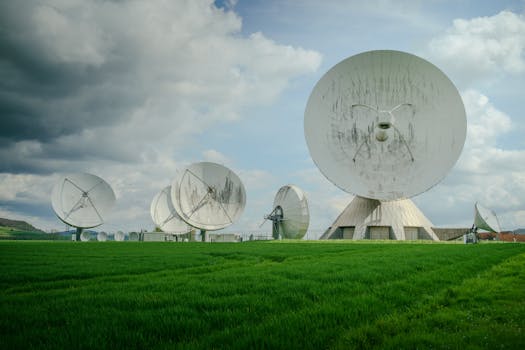The New Frontier: Exploring the Latest Trends in Satellite Communication

The New Frontier: Exploring the Latest Trends in Satellite Communication
Satellite Communication
Satellite communication is the new frontier in the world of technology, and it’s transforming the way we connect and interact with the world. With the increasing demand for global connectivity, satellite communication has become a vital component in the development of modern communication systems. The focus keyword Satellite Communication has been a buzzword in the tech industry, with many companies and organizations investing heavily in this field.
Satellite communication involves the use of satellites to transmit and receive data, voice, and video signals. This technology has been around for decades, but recent advancements in space technology and wireless networks have made it more accessible and affordable for various industries and individuals. From providing internet connectivity in remote areas to facilitating global communication for businesses and governments, satellite communication is playing a crucial role in shaping the future of communication.
Latest Trends in Satellite Communication
The latest trends in satellite communication are driven by the increasing demand for high-speed data transfer, global connectivity, and affordable communication solutions. Some of the key trends in this field include the development of Low Earth Orbit (LEO) satellites, which offer faster and more reliable communication services. Another trend is the use of High-Throughput Satellites (HTS), which provide higher bandwidth and faster data transfer rates. The integration of Artificial Intelligence (AI) and Machine Learning (ML) algorithms in satellite communication systems is also becoming more prevalent, enabling more efficient and automated communication networks.
The use of satellite communication is not limited to any particular industry or sector. It has a wide range of applications, from providing emergency communication services during natural disasters to facilitating global communication for businesses and governments. The increasing adoption of satellite communication is also driven by the growing demand for Internet of Things (IoT) connectivity, which requires reliable and efficient communication networks to function effectively.
Challenges and Opportunities
Despite the many benefits and opportunities offered by satellite communication, there are also several challenges that need to be addressed. One of the main challenges is the high cost of satellite launches, which can be a significant barrier for many companies and organizations. Another challenge is the regulatory framework, which can vary from country to country and may not always be conducive to the development of satellite communication systems.
However, these challenges also present opportunities for innovation and growth. The development of reusable rockets and small satellites is making satellite launches more affordable and accessible. The increasing demand for satellite communication is also driving investment in this field, with many companies and governments investing heavily in the development of new satellite communication systems. The integration of satellite communication with other technologies, such as 5G networks and cloud computing, is also creating new opportunities for innovation and growth.
Conclusion
In conclusion, the new frontier of satellite communication is transforming the way we connect and interact with the world. With the latest trends and advancements in this field, satellite communication is becoming more accessible and affordable for various industries and individuals. While there are challenges that need to be addressed, the opportunities for innovation and growth are significant. As the demand for global connectivity and high-speed data transfer continues to grow, satellite communication is likely to play an increasingly important role in shaping the future of communication.



